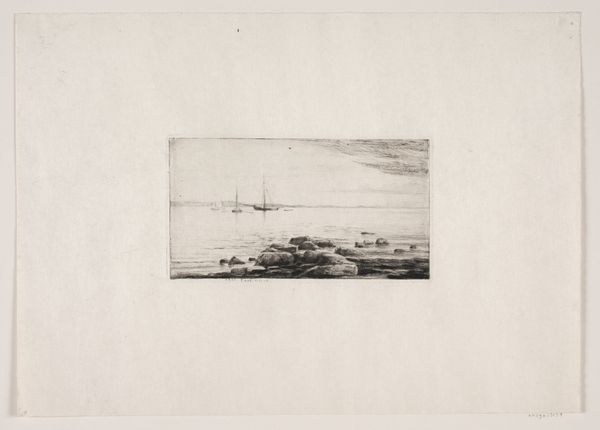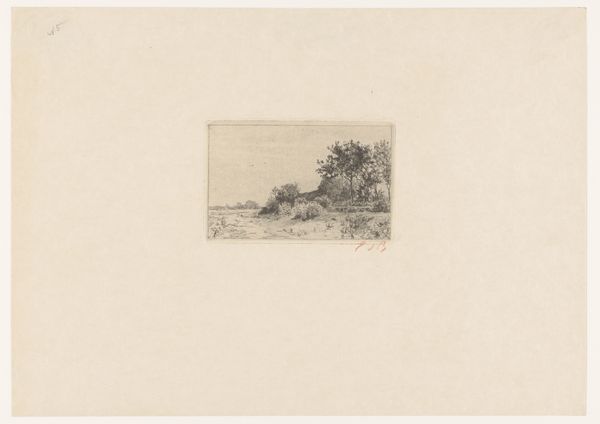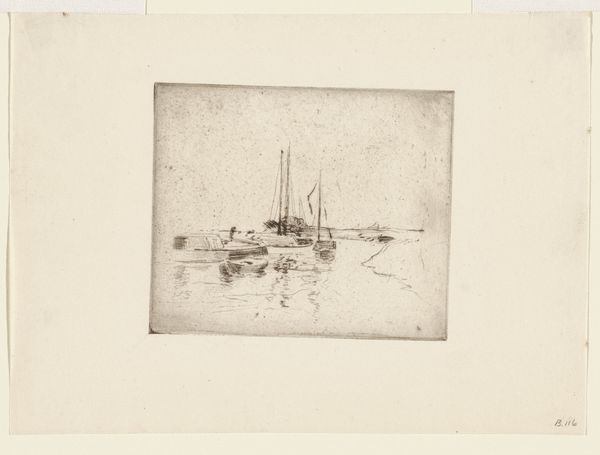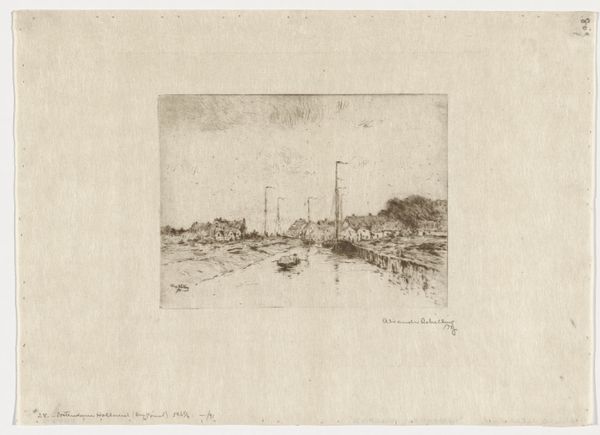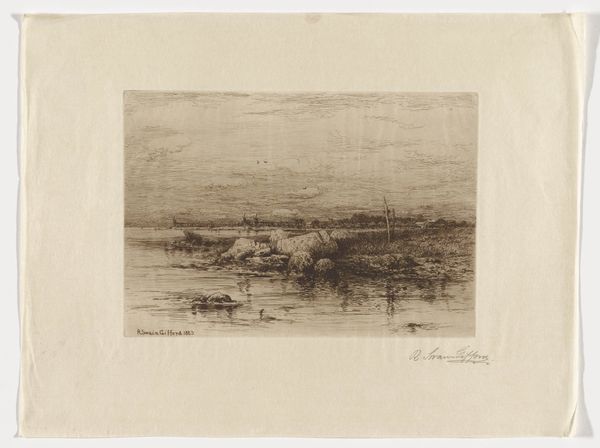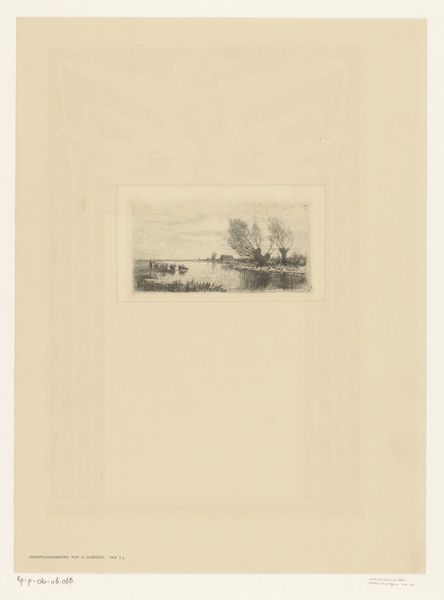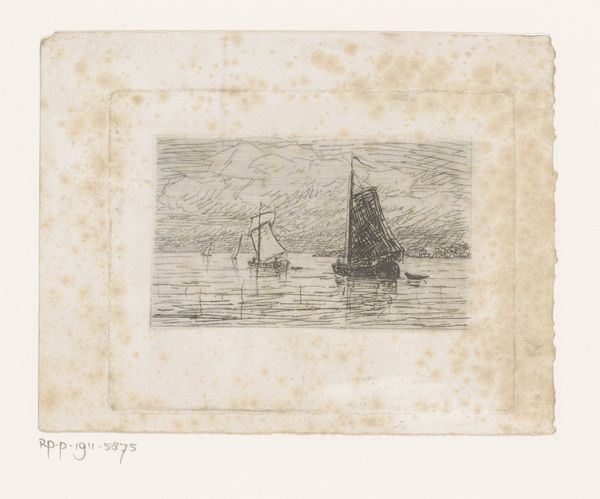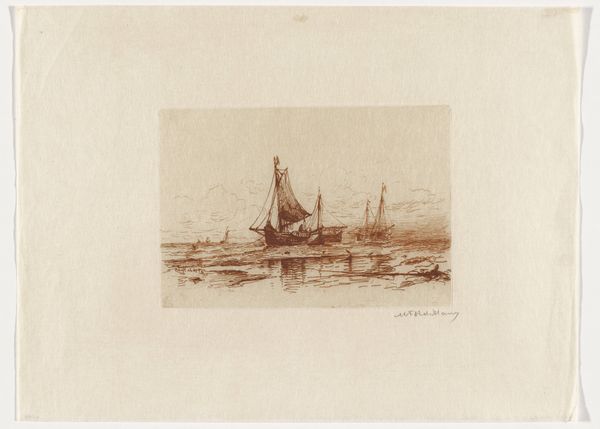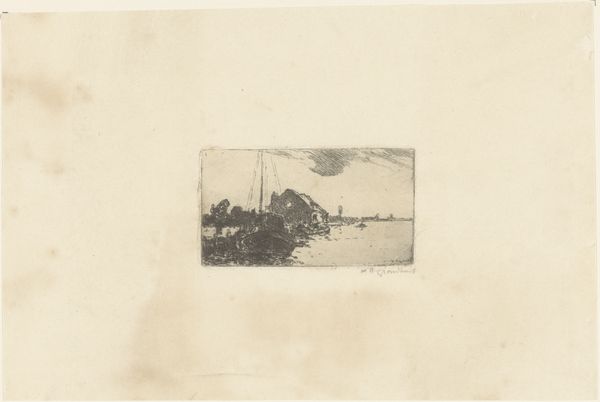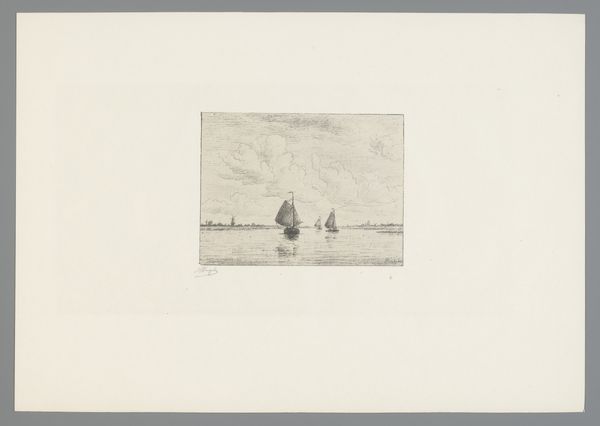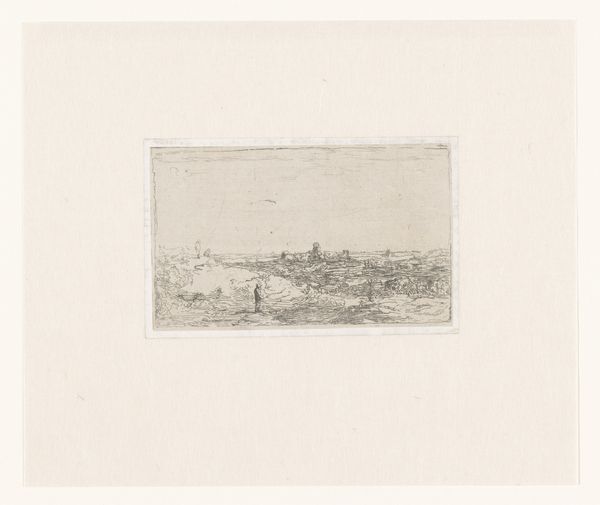
print, etching
# print
#
etching
#
landscape
#
united-states
#
line
#
cityscape
#
realism
Dimensions: 3 13/16 x 4 15/16 in. (9.68 x 12.54 cm) (plate)12 3/4 x 17 1/4 in. (32.39 x 43.82 cm) (sheet)
Copyright: Public Domain
Curator: Oh, this strikes me as an early memory. It has a certain… gauziness, a dreamlike quality that isn't quite nostalgia, but something akin to it. Editor: That's interesting. We're looking at Stephen Parrish's etching, "Quebec," dating from around the 19th century. It’s part of the Minneapolis Institute of Art's collection. For me, the scene feels ripe with potential narratives about trade and transatlantic exchange. Curator: Oh, absolutely. I see what you mean; there's this stillness that holds such possibility! Look at the masts of the ships almost like reeds, so delicate. And the city tucked into the hills in the background, shrouded in a soft focus – I get the sense it is meant as more of a feeling. Editor: And that feeling, perhaps, romanticizes the complexities of a port city, wouldn’t you say? The composition is very traditional. Consider how such images shaped perceptions of colonial landscapes, masking the power dynamics and resource exploitation inherent in these settings. Curator: That's a sobering thought. Still, technically, the work is wonderful. The line work in the etching—it’s just so crisp and precise, yet he manages to capture atmosphere and mood without heavy-handedness. Editor: Yes, Parrish's command of line is undeniable, though I believe his choices subtly underscore the established hierarchies of the time. We see the romanticization of nature alongside human activity without really asking critical questions. Curator: So it is almost… complicit? By not challenging the status quo? I am often left questioning my relationship to nature in general when I gaze at it so passively, too. So I get where you are going there… Editor: Precisely. It prompts questions of whose stories are centered in these visual records. What realities are softened, or omitted altogether? Understanding those dynamics is essential when engaging with such idyllic scenes. Curator: I leave more thoughtful and definitely seeing the print in an entirely new light now. Thank you. Editor: Always. Recognizing those silences allows us to amplify other voices, enriching the story, I would hope, over time.
Comments
No comments
Be the first to comment and join the conversation on the ultimate creative platform.
